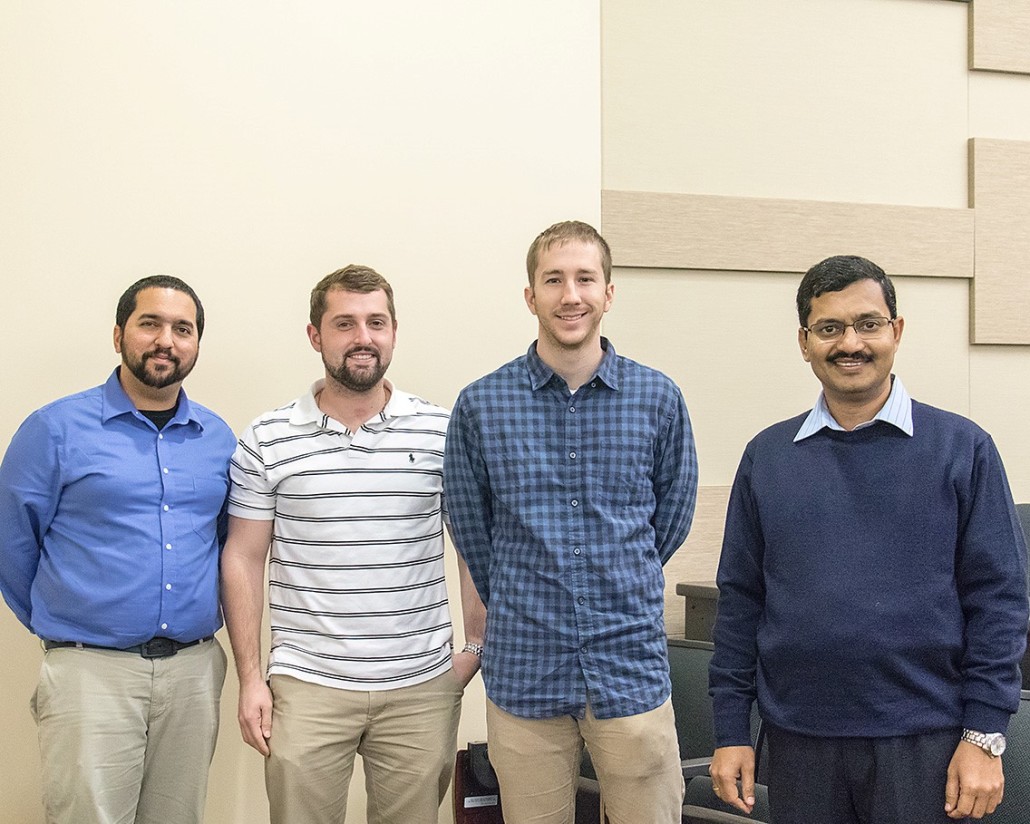Suncoast Nanotech
Suncoast Nanotech team developing a more efficient process to manufacture Quantum dots
Quantum dots. They sound like something out of a sci-fi movie. Tiny crystals—10,000 times smaller than the diameter of a single strand of your hair—that can be manipulated in a way as to fluoresce specific wavelengths of light. They are very powerful devices, semiconductors actually, that can convert light into nearly any color in the visible spectrum and they are found in the LCD display of your smartphone.
They are also being considered for a wide variety of other applications, including agriculture, quantum computing and medical imaging. The catch is that Quantum dots are expensive to produce, which may hasten the research needed to fully leverage their applicability into new areas.
The Suncoast Nanotech team, part of Cohort 5 of UCF’s I-Corps program, is working on a solution. Graduate assistant Jorge Martinez, the team’s Entrepreneur Lead, along with fellow UCF students Tyler Maxwell and Edward Price, are developing a more efficient process to manufacture quantum dots. Swadeshmukul Santra, Ph.D., UCF NanoScience Technology Center, Department of Chemistry, Department of Materials Science and Engineering and Burnett School of Biomedical Sciences serves as the Academic Lead for the team.
“We’re focused on the potential to create a bulk amount of quantum dot product at a fraction of the current market cost,” said Martinez. “Through our patented synthesis process, we believe we can help ensure the availability of, and access to, quantum dots in applications including research, agriculture, education, and clinical laboratories.”
For example, clinical research laboratories are constantly testing quantum dots for tissue imaging (in place of current fluorophore technologies that are more sensitive to environmental conditions), especially when attempting to locate the site of a tumor and whether a certain drug is treating the desired site.
Quantum dots can also serve as an additive to slow-release fertilizer or as a delivery system for active compounds in plant systems. A biodegradable and environmentally-friendly product, they can provide a strategy to visually confirm the amount of fertilizer in soil via fluorescence, which can more precisely determine the optimal amount of fertilizer needed to be applied.
Current offerings for quantum dots are expensive and can limit the amount of research that can be performed, effectively limiting future innovation. They are toxic to mammalian cells due to heavy metal content, which also limits their application in biomedical research.
“Our product is significantly more biocompatible than current offerings, which allows for mass use in research and educational institutions,” said Martinez.
The team’s Sol-Glow process for manufacturing quantum dot semiconductors removes the need for harsh solvents, reduces the time for synthesis–15 minutes compared to the 4 hours needed with more traditional routes, and allows for a greater amount of quantum dots to be synthesized and sold at a lesser price than current offerings.



